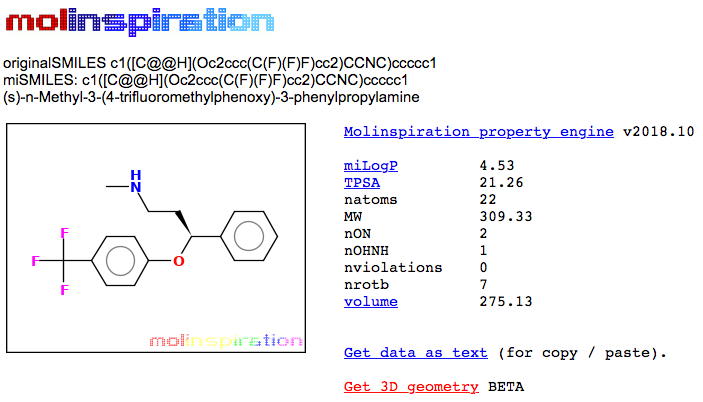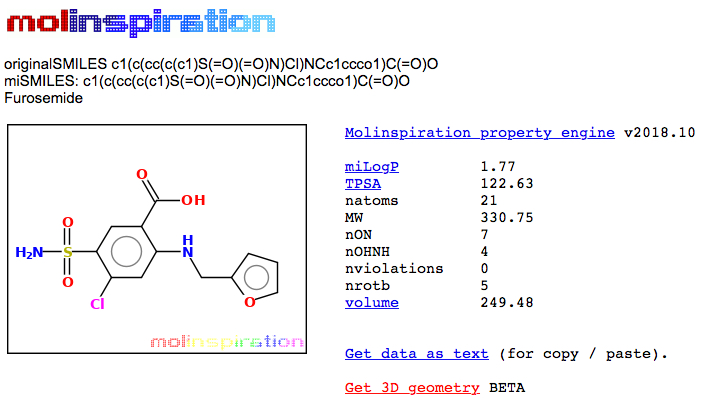Topological polar surface area
Topological polar surface area (TPSA), sometimes referred to simply as “polar surface area” (PSA) is a value that can be calculated for a drug that provides an indication of the drug’s polarity, and thus an indication of its lipid solubility. Calculations may be performed online (for example, at this website). The TPSA value, which has units of Ångströms2 (an Ångström is 0.1 nm) increases as the number of polar groups within the drug structure increases. Specifically, functional groups containing nitrogen and oxygen atoms impart polarity and increase the TPSA value for a drug. Drugs with higher TPSA values are less lipid-soluble and will, in general, be absorbed less extensively and more slowly, and will distribute less extensively, than drugs with lower TPSA values.
Once TPSA is known for a drug, the value can be used, for example, to predict the extent to which an oral dose of the drug will be absorbed from the GI tract into the portal circulation, or the extent to which the drug will partition into the brain from the plasma, by consulting published graphs that relate TPSA values to these drug behaviours.
It is perhaps not surprising that drugs that are designed to work in the CNS – for example, antidepressants and antipsychotics – tend to have lower TPSA values than drugs designed to act in the periphery. This is beneficial: drugs designed to act in the CNS typically distribute more extensively to the CNS thanks to their higher lipid solubility and are thus present in the circulation at lower concentrations. Consequently, they may be less likely to cause peripheral (often cardiovascular) side effects. In contrast, drugs designed to work in the periphery do not reach such high concentrations in the CNS, meaning the likelihood of CNS-mediated side effects is smaller. The examples below, generated through the Molinspiration website linked above, show fluoxetine (Prozac; a centrally-acting antidepressant) in the upper panel, with a TPSA of 21.26, and furosemide (Lasix; a diuretic that targets transport proteins in the kidneys) in the lower panel, with a TPSA of 122.63.


Drugs with lower TPSA values tend to be more extensively metabolised since they are more lipid soluble and thus are more likely to be reabsorbed extensively in the kidneys. As a result, drugs with lower TPSA values are more likely to be involved in drug-drug interactions due to competition at the level of hepatic CYP (or other) enzymes.

